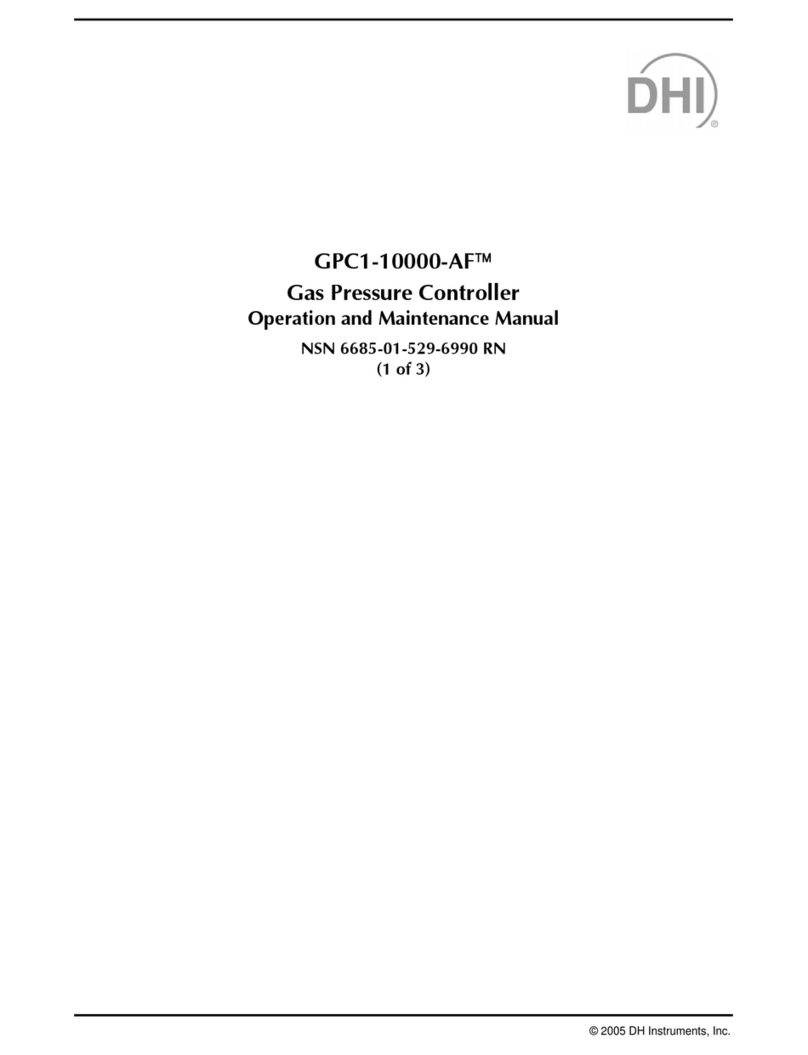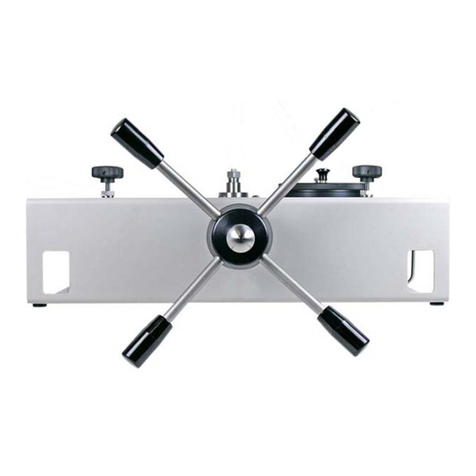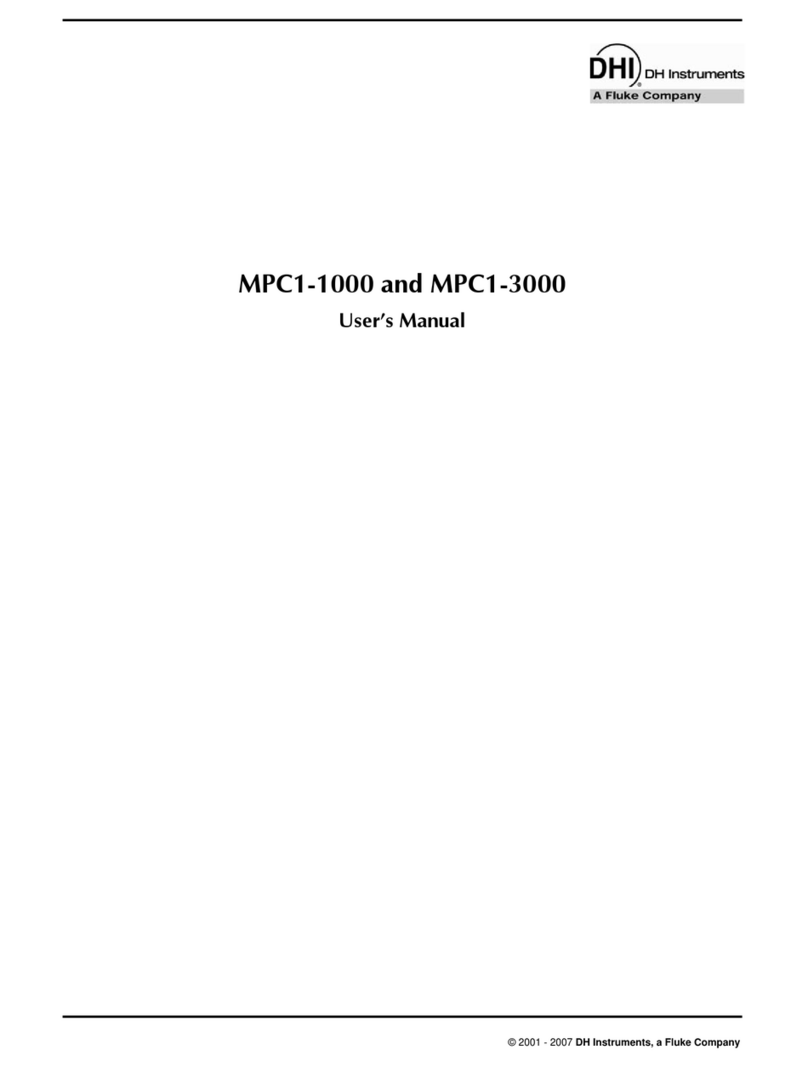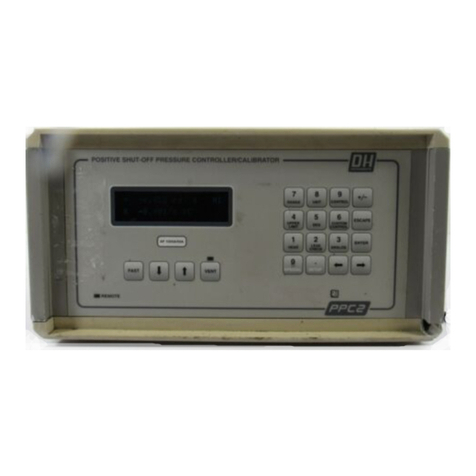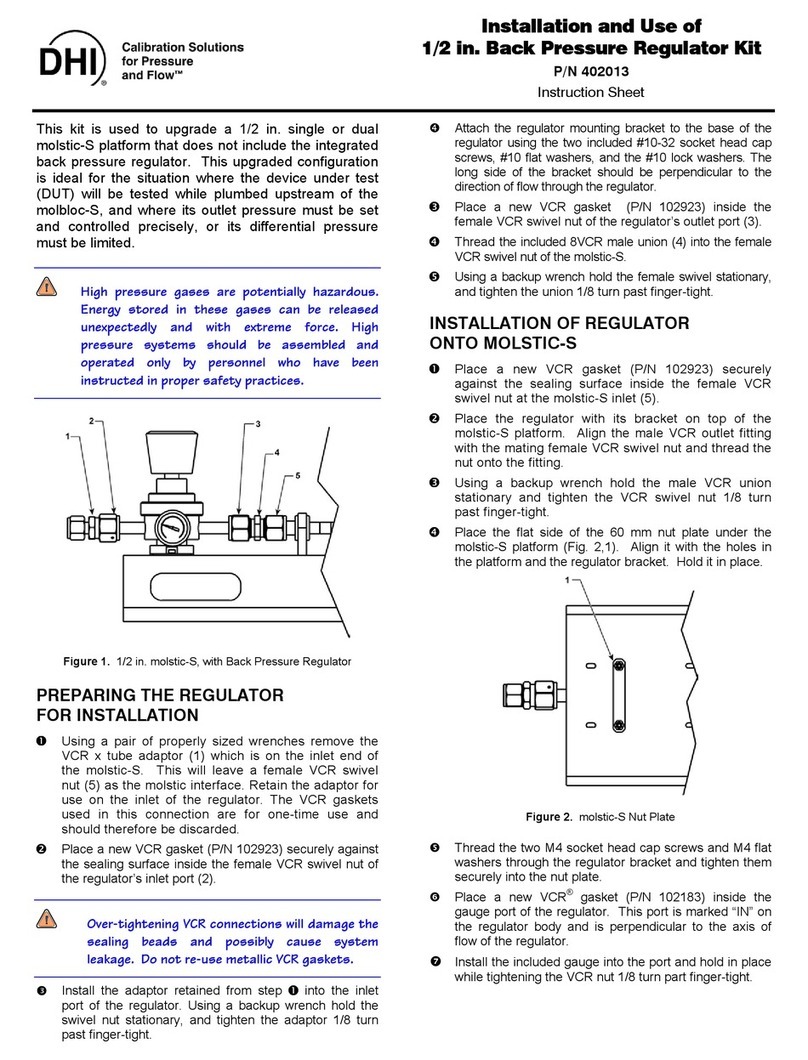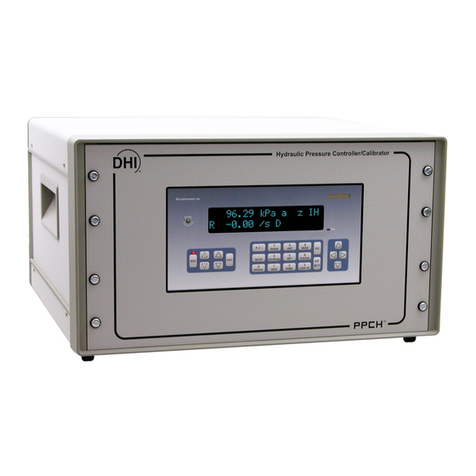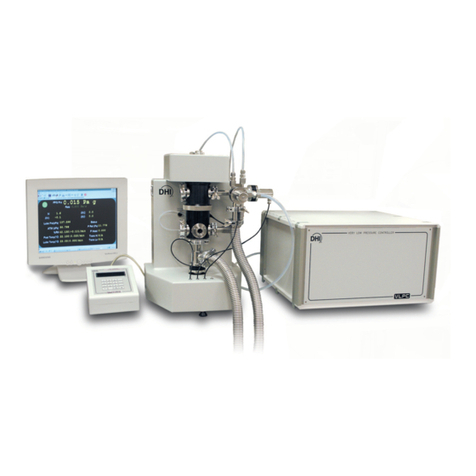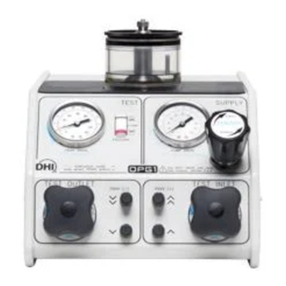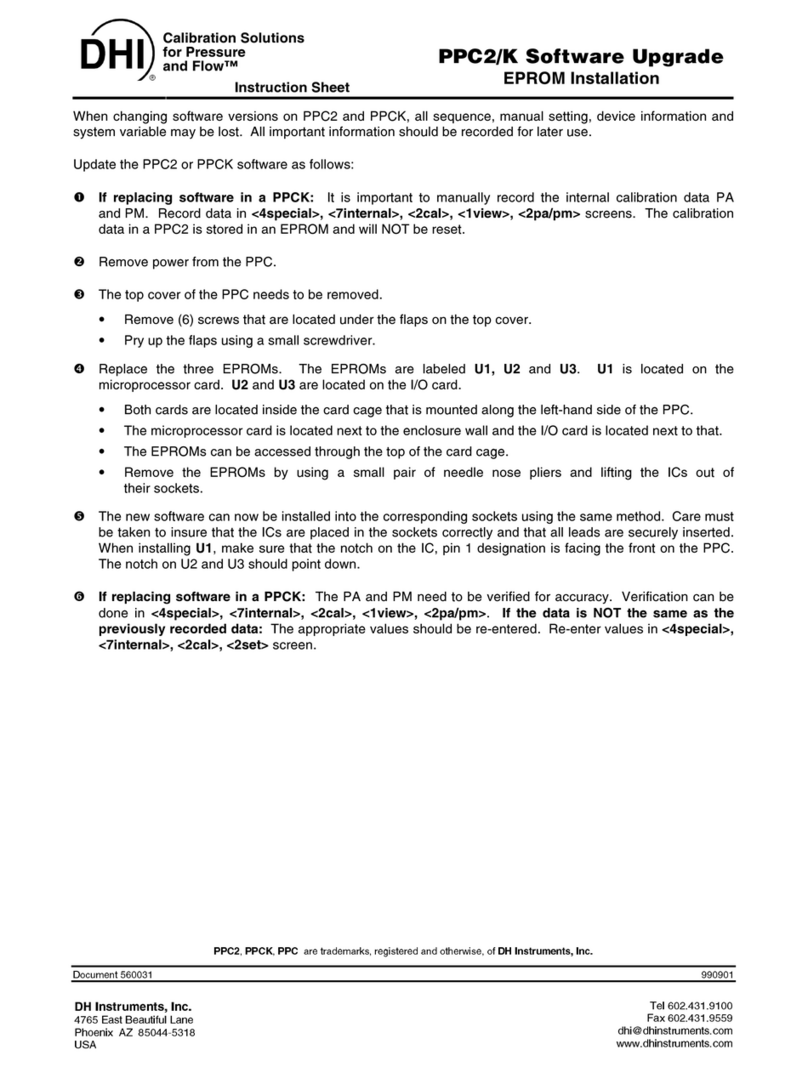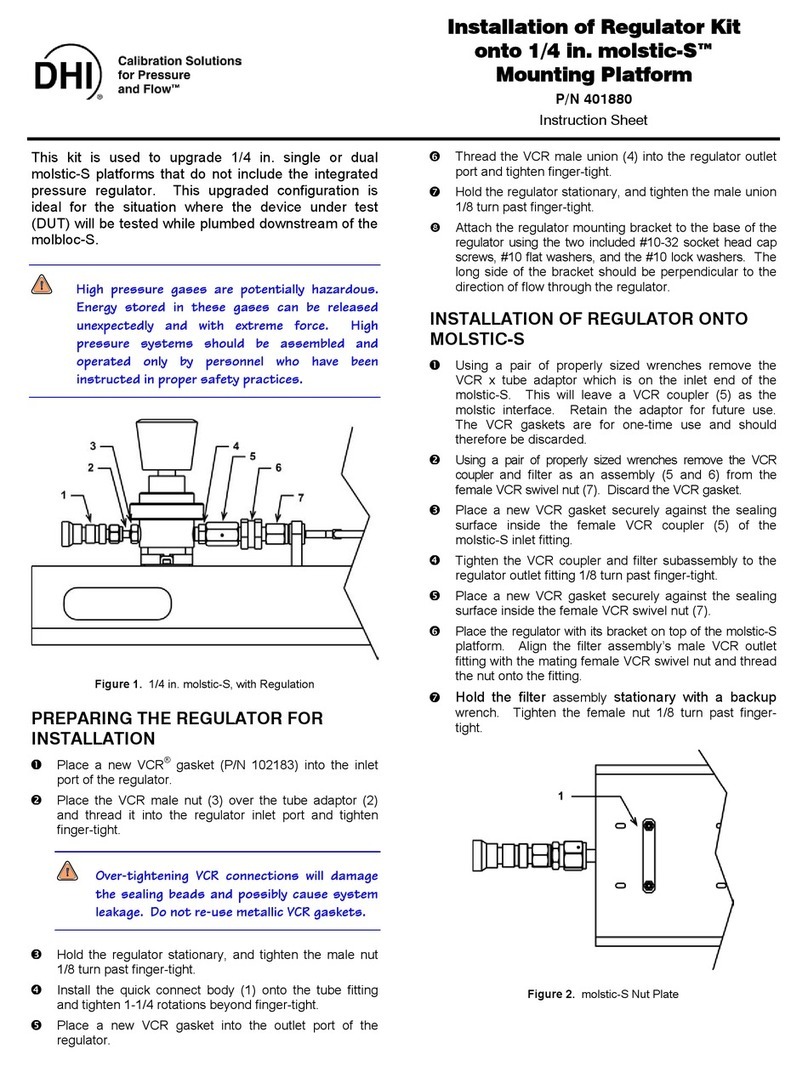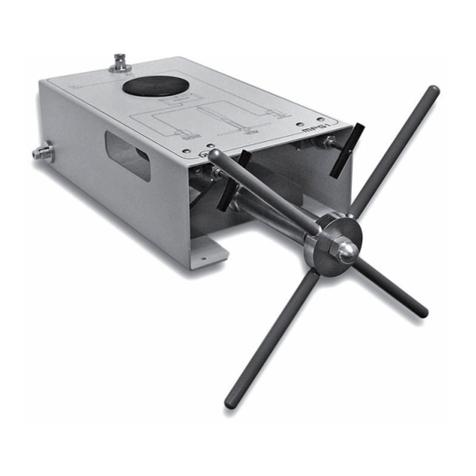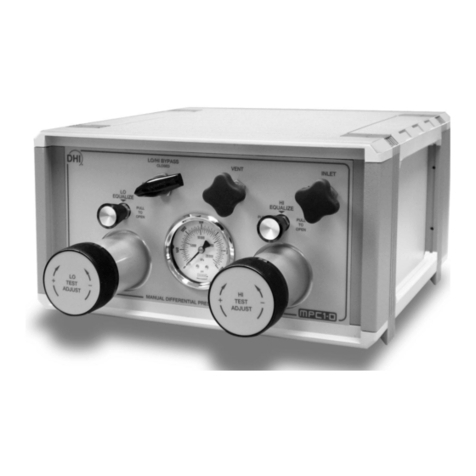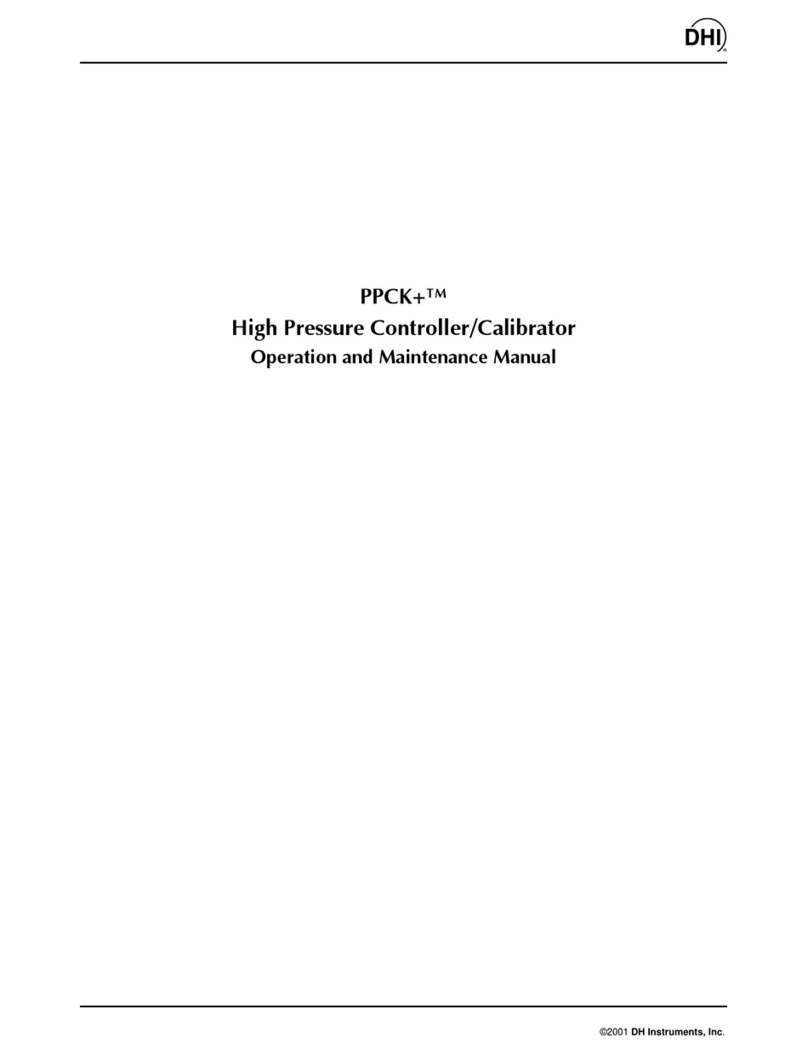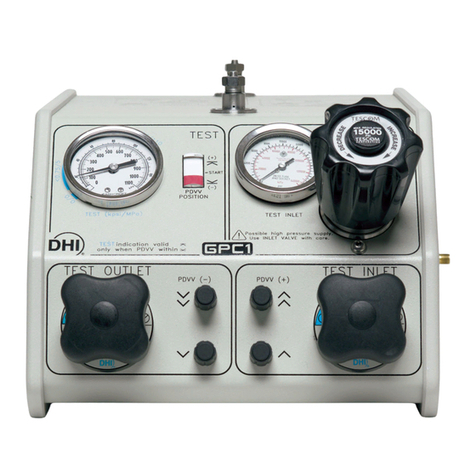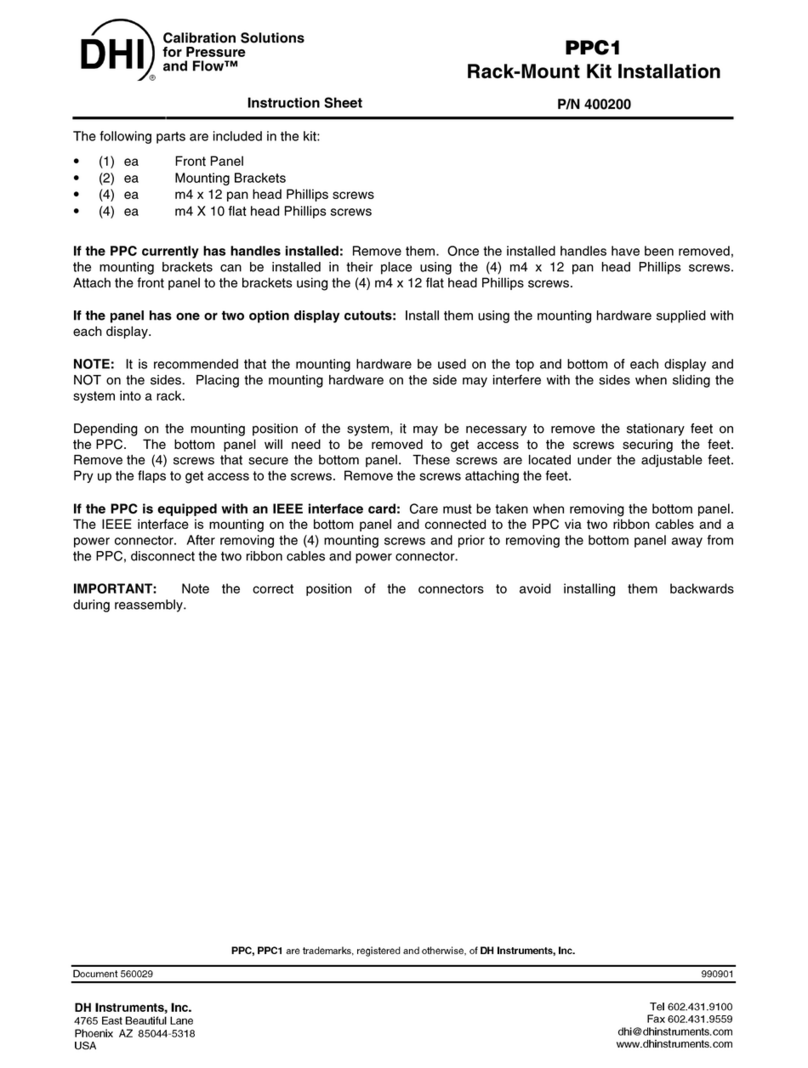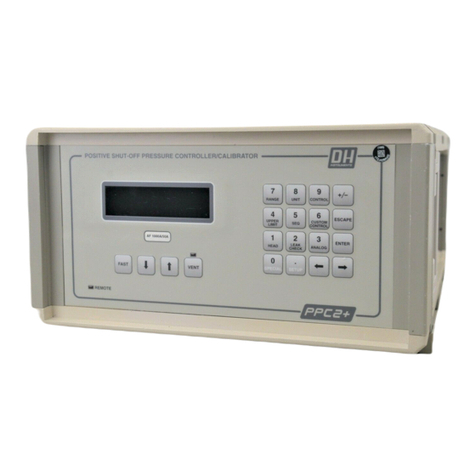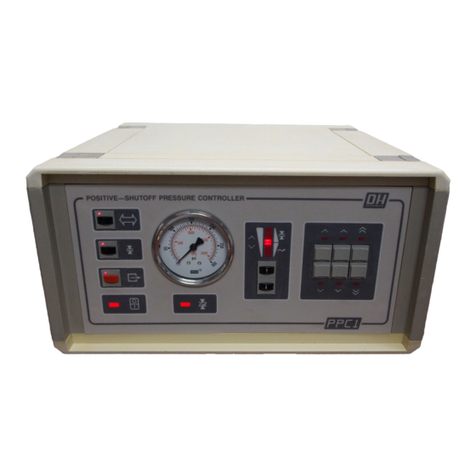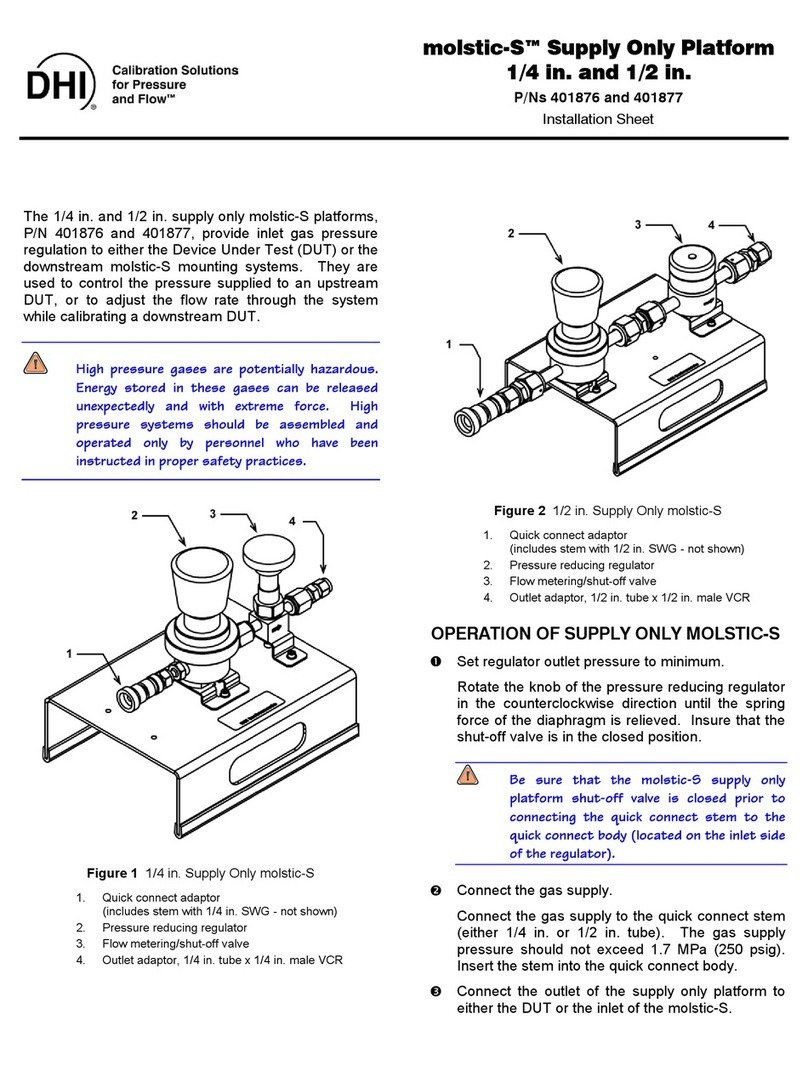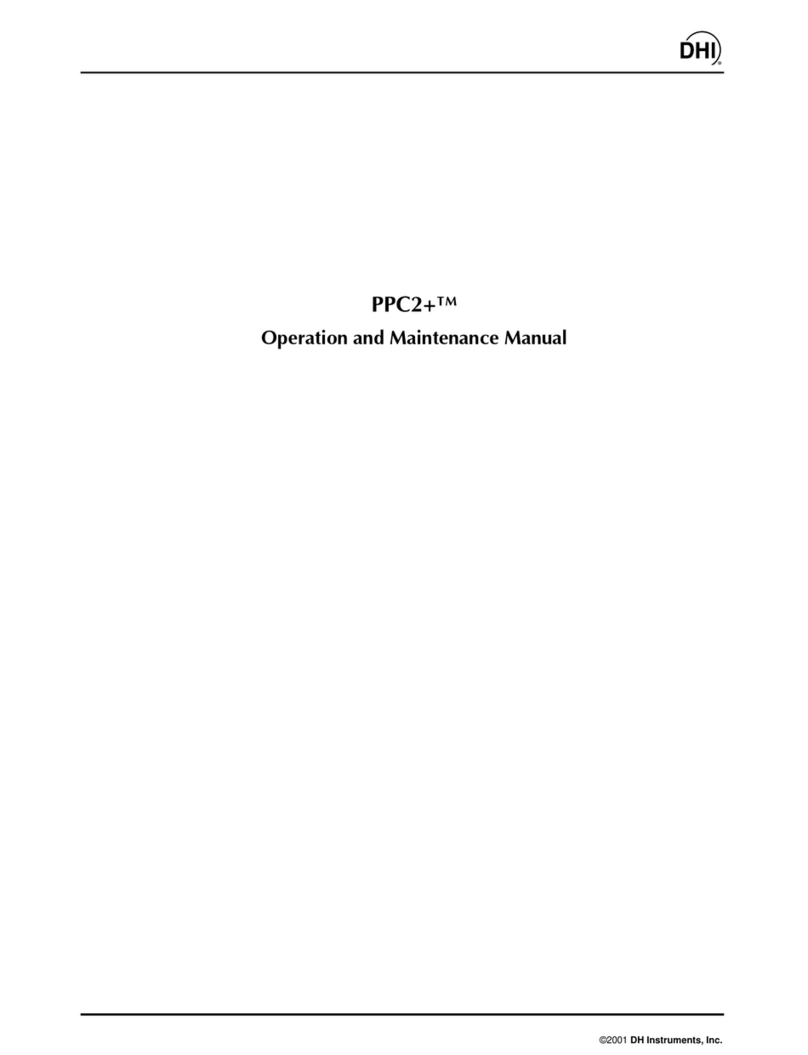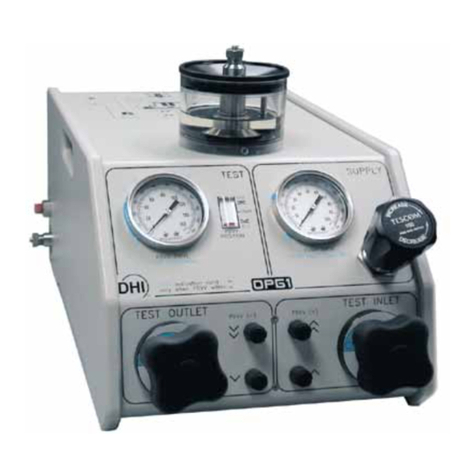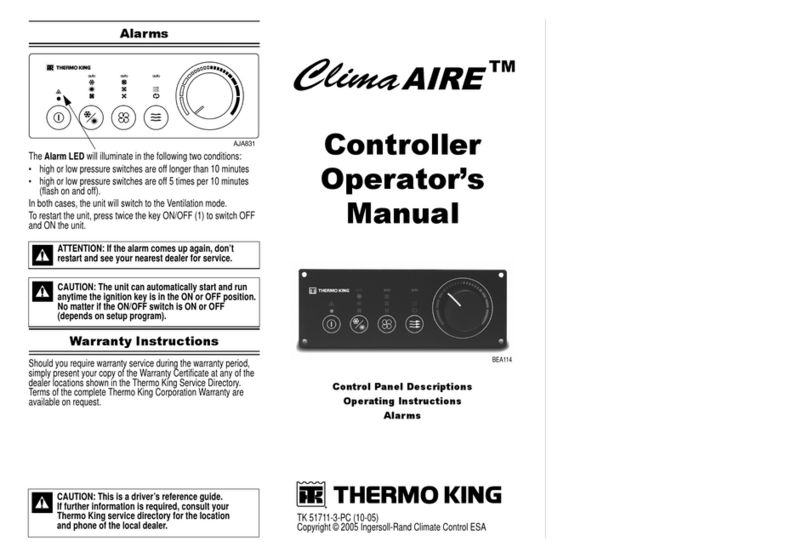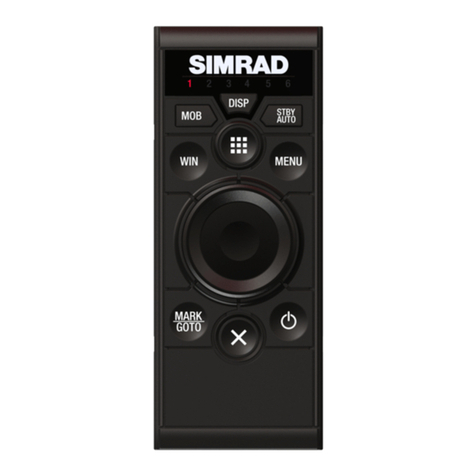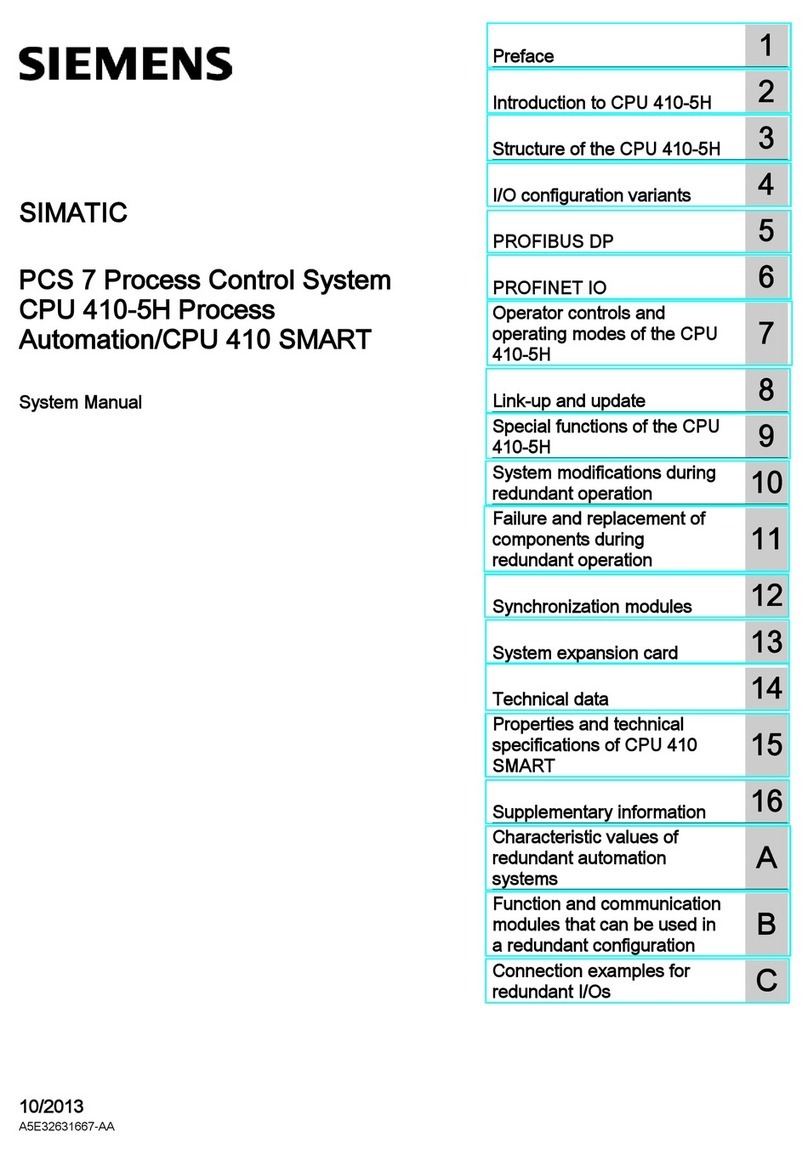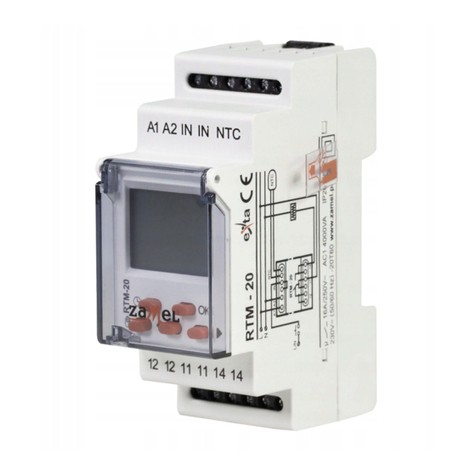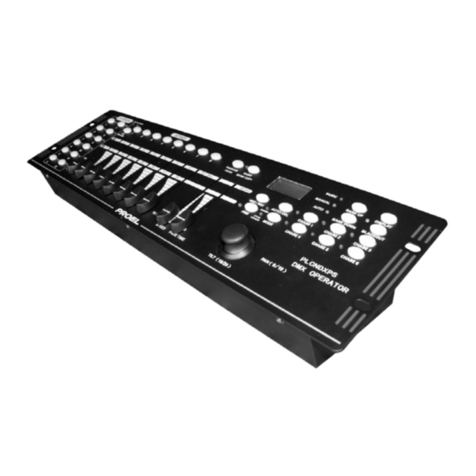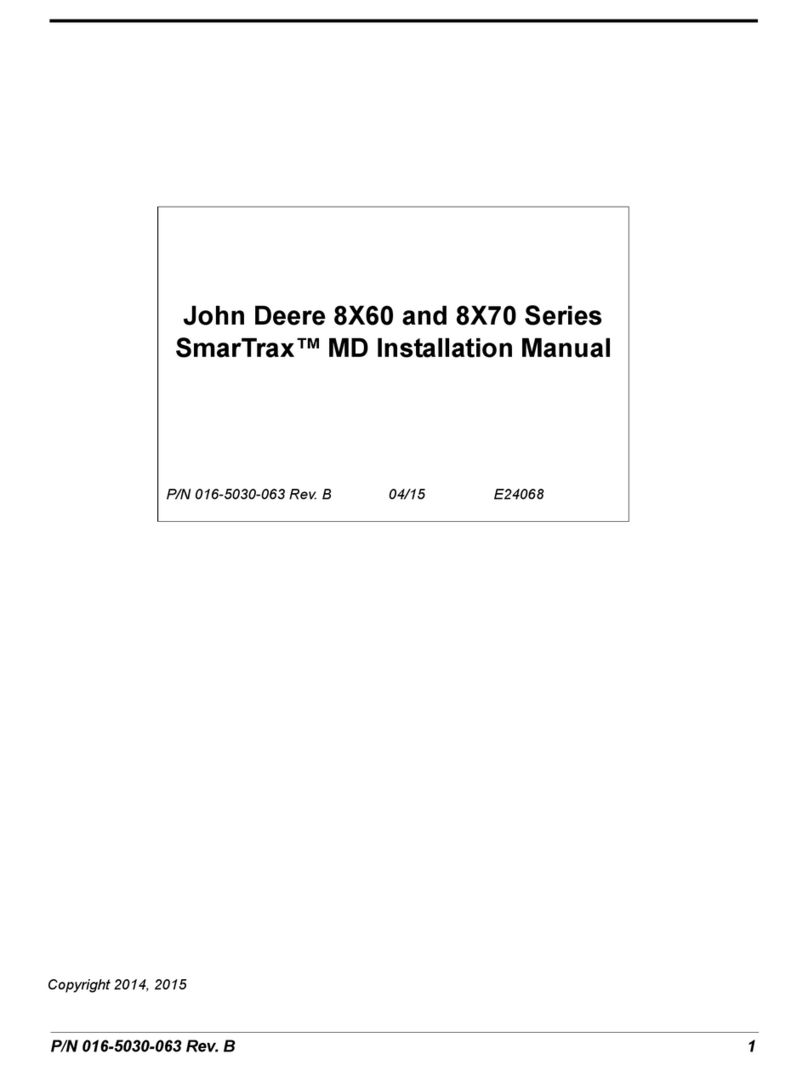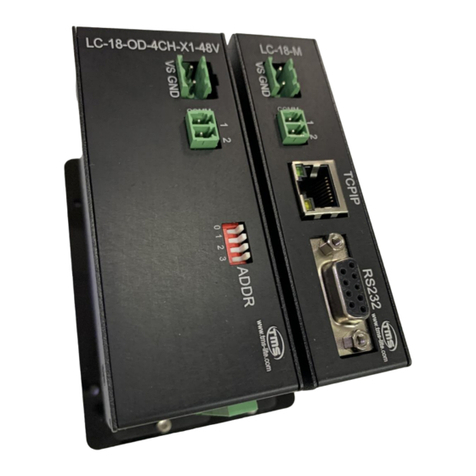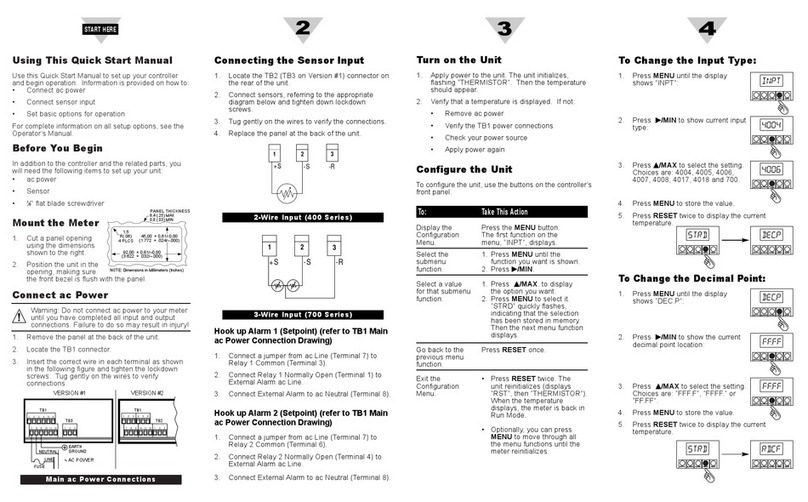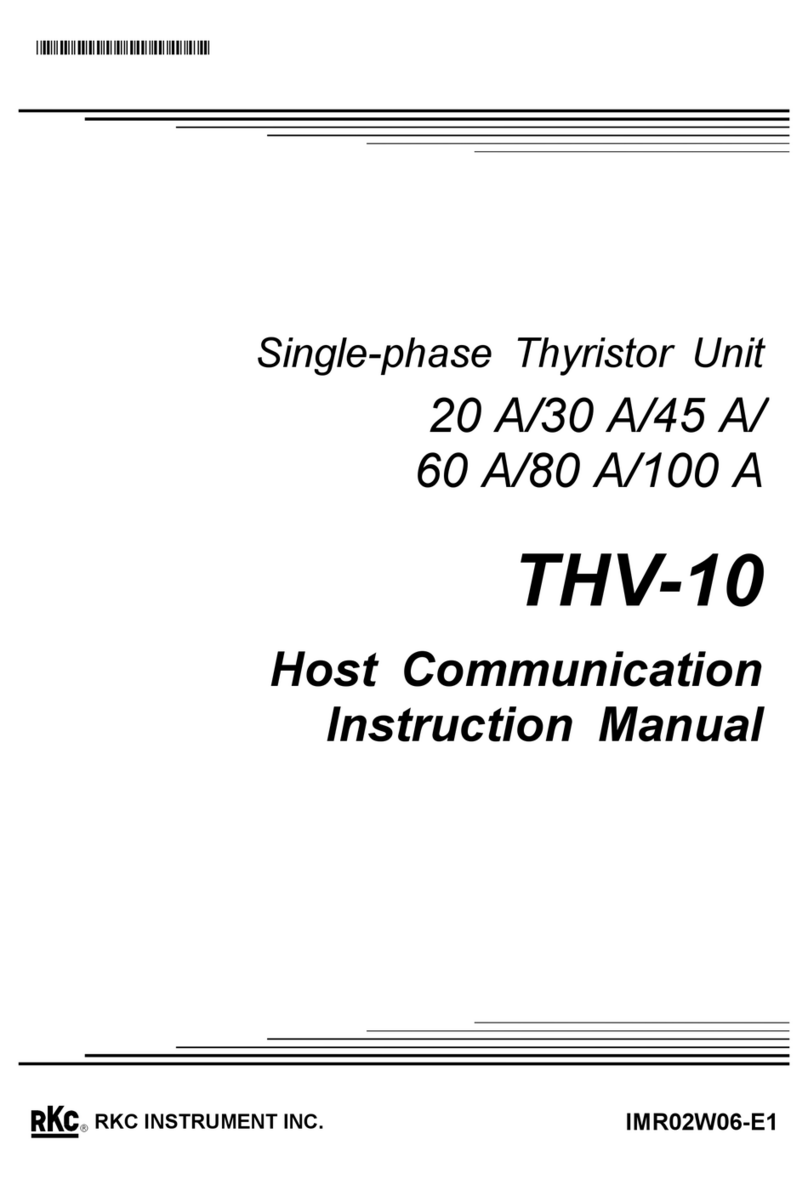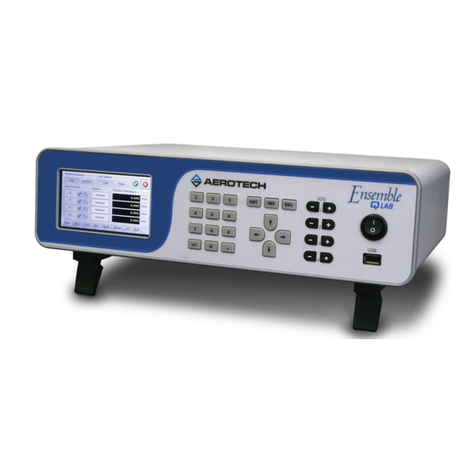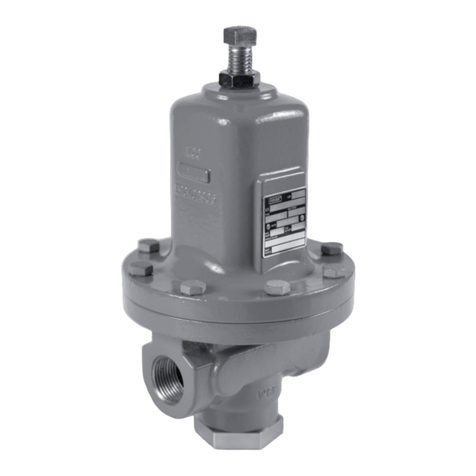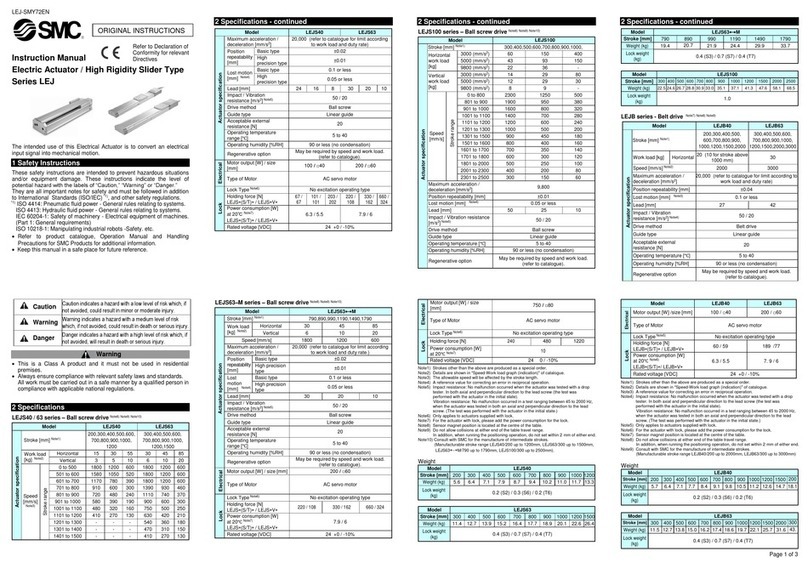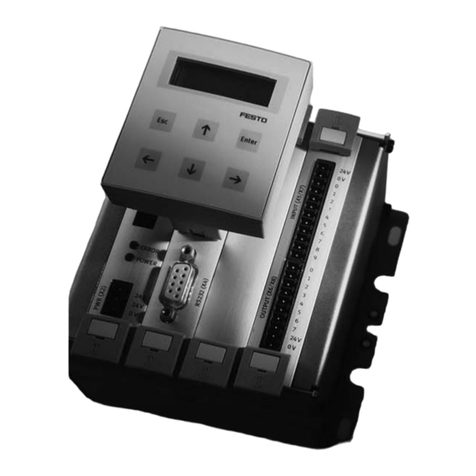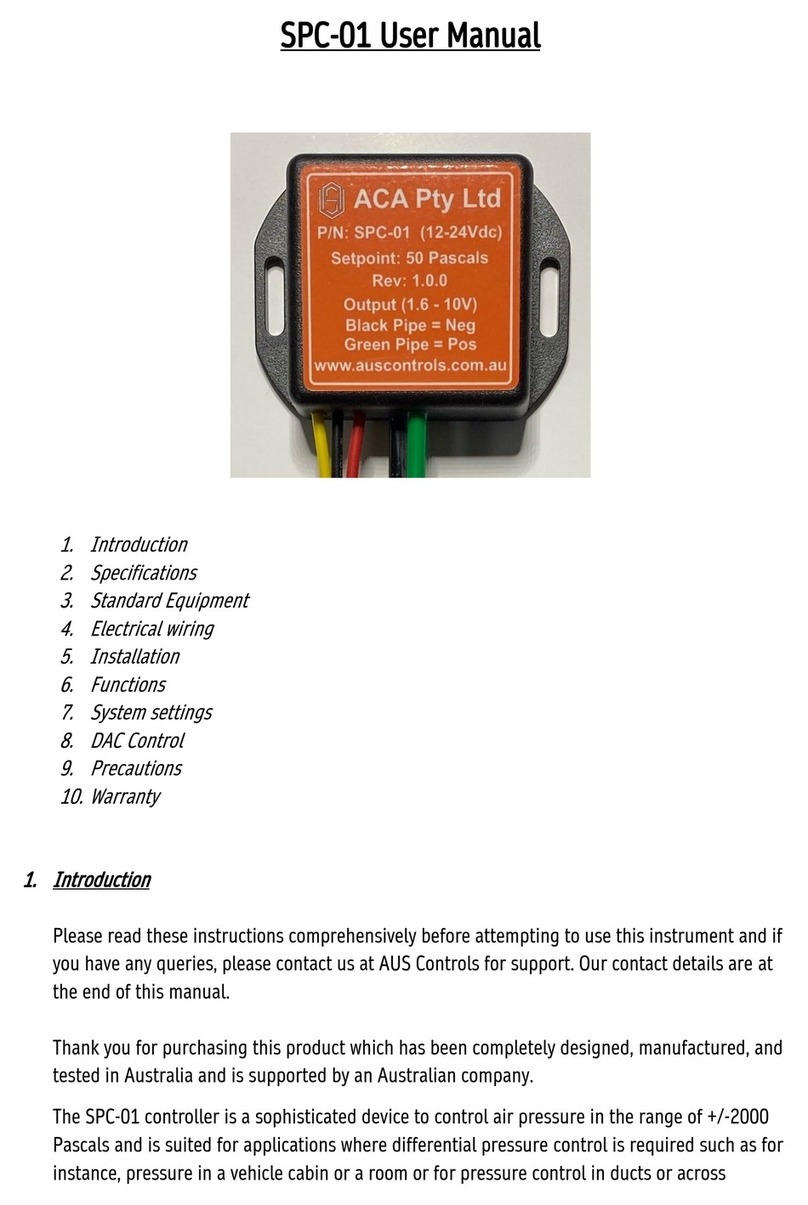
2. INSTALLATION
Page 13 © 2007 DH Instruments, a Fluke Company
GPC1 TEST port
DH500 nipple with
glands and collars
installed
Adaptor, DH500 F to
1/4 in. M, 1/4 in. F,
1/8 in. M, AN4 M
or other
Connection to DUT
GPC1 TEST port
DH500 nipple with
glands and collars
installed
Adaptor, DH500 F to
1/4 in. M, 1/4 in. F,
1/8 in. M, AN4 M
or other
Connection to DUT
The PGC-10000-AF fittings accessory kit includes adaptors to convert the DH500 F
TEST connection to other commonly used fittings. The adaptors are made by
combining a DH500 F adaptor with a 2.75 in., 6 in. or 12 in. DH500 nipple. The
nipple/adaptor assembly is then
installed on the DUT. Finally, the
nipple/adaptor/DUT assembly is
installed on the GPC1’s DH500 F TEST
connection. Note that the gland nut on
the DH500 nipple assembly can be
tightened into the DH500 F connection
without rotating the nipple or DUT.
Adaptors included in the GPC1
accessory kit are:
•1/4 in. NPT F
•1/4 in. NPT M
•1/8 in. NPT M
•37 degree flare M (AN4 M)
Figure 6. Adapting TEST port to connect a
device under test
Highly pressurized gas can be extremely hazardous. Before applying pressure
to GPC1 and/or the system connected to it, be sure that all pressure vessels and
connections are rated for the pressure levels that will be applied and that all
connections have been properly tightened (see Section 2.5.5).
2.4.4.3 CLEANLINESS CONSIDERATIONS WHEN CONNECTING DUTS
Special design features are included in GPC1 to avoid excessive contamination
of GPC1 if liquids should return from a DUT to which it is connected.
For this purpose, GPC1 is equipped with an inclined manifold that serves as a
liquid sump (see Figure 77). A DRAIN port is provided at the low point so that
the sump can be easily purged. The TEST ports all go directly through the sump
so that any liquids returning from the system under test will collect there rather
than being carried throughout GPC1. The top, rear TEST1 port is supplied
directly from the SUPPLY port so that it is always filled with clean gas from the
supply. Even if liquids are present in the sump, they will not enter the TEST1
port as gas that may have been exposed to liquids never flows into the port from
GPC1
(see Figure 77).
Below are recommendations for use of the three (3) GPC1 TEST ports.
If there is no risk of return of liquids from the devices that will be connected to
GPC1, it is not necessary to discriminate TEST port usage.
•TEST1 port (top, rear): This port is supplied directly with clean gas from the
SUPPLY port and should be reserved for connecting devices that are known
to be liquid free and must be protected from any risk of liquid contamination.
If no such devices will be connected to GPC1, then this port may be used as
any TEST port would.
•TEST2 port (left lateral): Normally, the system reference pressure
measurement device is connected here. In a PGC-10000-AF Pneumatic
Gauge Calibrator, this is an RPM4/HPMS A70M/A20M-AF.




















